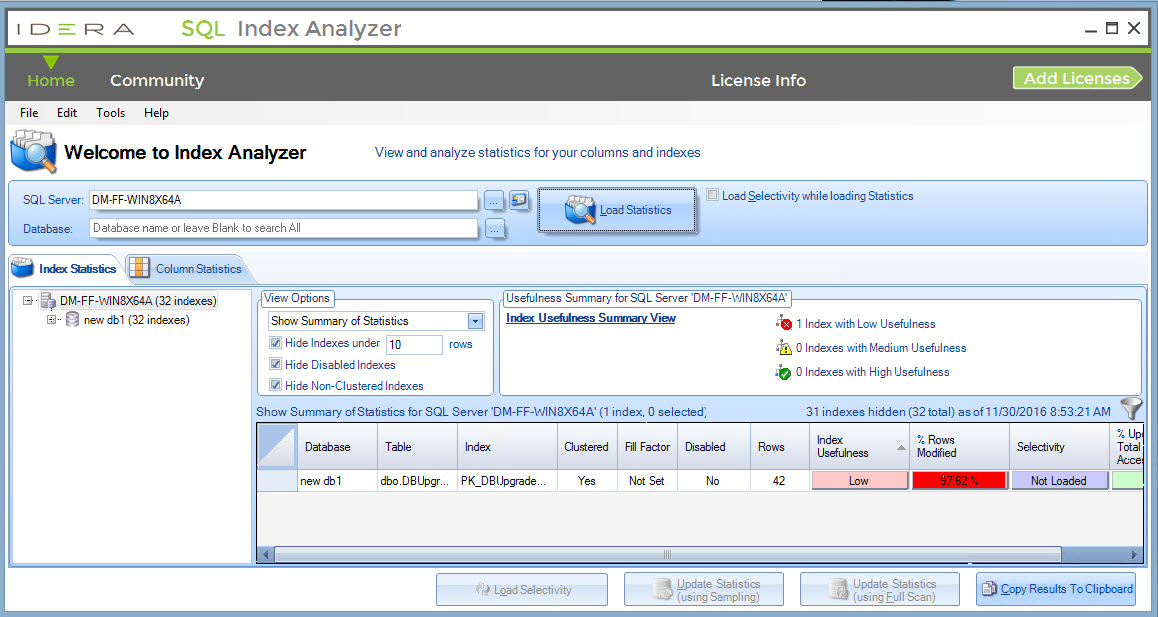To keep databases running smoothly, it is important to evaluate the properties and performance statistics of indexes of databases.
For this purpose, display these statistics of indexes:
- The percentage of rows modified since statistics were last updated.
- The percentage of updates to the total number of times the index is accessed.
- The columns affected by the statistic.
- Whether the index is clustered or disabled.
- The name of the database and table containing the index.
- The fill factor used to create the index.
- The name of the index.
- An estimate of the likelihood of using the index.
- The date and time when the statistics for the index was last updated.
- The number of lookups performed on the index.
- The number of pages used by the index.
- The number of rows in the index.
- The number of rows modified since the statistics were last updated.
- The number of scans and seeks performed on the index.
- The statistical uniqueness of each row of the index.
- The physical size of the index in bytes.
- The total number of times the index is accessed.
- The number of updates to the index.
Also, display these statistics of index columns:
- The columns affected by the statistic.The name of the database from which the statistic was generated.
- The name of the database from which the statistic was generated.
- The number of updated, inserted or deleted rows.The statistical uniqueness of each row of the statistic.
- The name of the statistic calculated for the column.The name of the table from which the statistic was generated.
- The name of the table from which the statistic was generated.
The Index Analyzer tool of SQL Admin Toolset displays indexes contained in a specific table, and displays index properties and performance statistics across instances of SQL Server.This is how easy it is:
- Connect one or more instances.
- Calculate the statistics using all rows or using sampling.
- Display the statistics for the indexes.
- Optionally retrieve the selectivity.
- Sort the indexes by using the view options.
- Display the statistics of the index columns.
- Select a table to view its index data.
- Copy the results to the Windows Clipboard, and save the results as an XML and CSV text file.
Watch the video for more details:
Try this yourself by downloading the free 14-day trial of SQL Admin Toolset.
